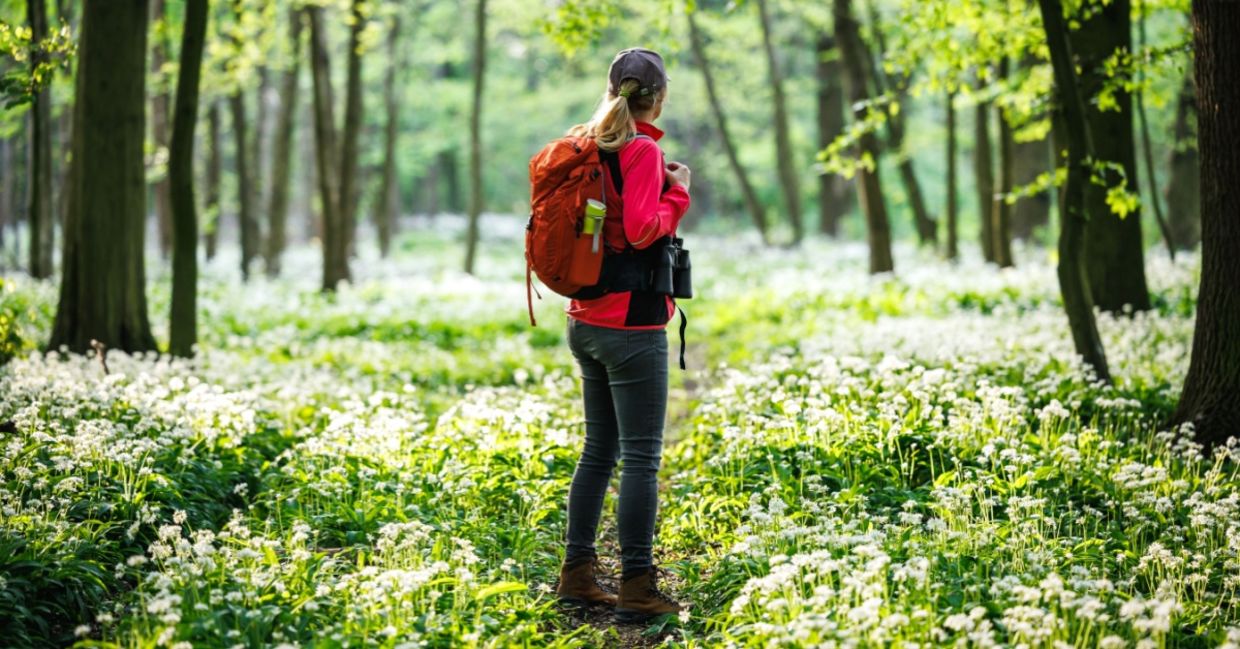
(Encierro / Shutterstock.com)
The need for mental and physical wellbeing has prompted an increasing number of people to turn to nature for solace and healing. National Geographic reports that one practice, in particular, has been gaining significant attention: forest therapy. Rooted in the Japanese practice of Shinrin-yoku, or "forest bathing," forest therapy offers a unique way to connect with nature, promoting a sense of peace and wellbeing.
Forest therapy is not merely about taking a walk in the woods. It is a guided experience that encourages individuals to slow down and engage with the natural world through all their senses. This practice has been linked to numerous health benefits, including reduced stress, improved mood, enhanced immune function, and even better cardiovascular health. The calming effect of nature, combined with mindful engagement, creates a powerful remedy for the stresses of modern life.
View this post on Instagram
Immersing in natural tranquility
The scientific community has taken a keen interest in understanding how and why forest therapy works. A study published in the Environmental Preventitive Medicine Journal shows that spending time in nature, particularly in forests, can have profound effects on both mental and physical health. According to Harvard Health, being in a forest environment can lower levels of cortisol, the body's primary stress hormone, and reduce blood pressure and heart rate. This aligns with findings from National Geographic, that highlight how forest therapy trails are designed to optimize these health benefits by immersing individuals in environments rich in natural beauty and tranquility.
“Nature is important for our health in so many ways. We have a standardized recommendation that you spend at least two hours in nature each week and at least 20 minutes each time,” Melissa Lem, a Vancouver doctor and director of PaRx, a Canadian program encouraging doctors to prescribe time in nature for their patients, told National Geographic.
One key aspect of forest therapy is the role of phytoncides, the natural oils released by trees and plants. These compounds have been found to boost the immune system by increasing the production of natural killer cells, which help fight off infections and diseases. The fresh, oxygen-rich air of the forest also improves respiratory function and overall vitality.
View this post on Instagram
Forest therapy provides an opportunity to disconnect from the constant stimuli of urban life and technology. This digital detox allows the brain to rest and reset, reducing mental fatigue and improving cognitive function. Engaging with nature on a sensory level—listening to the rustling leaves, feeling the texture of tree bark, or breathing in the earthy scent of the forest floor—enhances mindfulness, bringing individuals into the present moment and away from the worries of everyday life.
The serenity of forest therapy trails
Forest therapy trails are specifically designed to create a serene and immersive experience. These trails often wind through lush forests, offering diverse flora and fauna that stimulate the senses and invite exploration. The Forest Therapy Hub explains that trained guides facilitate these experiences, helping participants to connect with nature more deeply through exercises that focus on breathing, observation, and reflection.
Walking these trails is not about speed or distance but about quality of experience. Participants are encouraged to pause frequently, observe their surroundings, and engage in activities like meditation or journaling. This slow, intentional approach fosters a deep connection with nature, leading to feelings of peace, gratitude, and even awe.
As more people discover the benefits of forest therapy, this practice is becoming an integral part of wellness routines worldwide. Whether you are seeking relief from stress, a boost in mood, or simply a moment of tranquility, forest therapy offers a path to healing that is as natural as it is effective. By embracing the serenity of the forest, we can reconnect with the earth and ourselves, finding harmony and well-being among the trees.
YOU MIGHT ALSO LIKE:
Use Spring Forest Qigong to Heal
How Forest Gardens Create a Sense of Wellness and Community
Technology For Trees!







